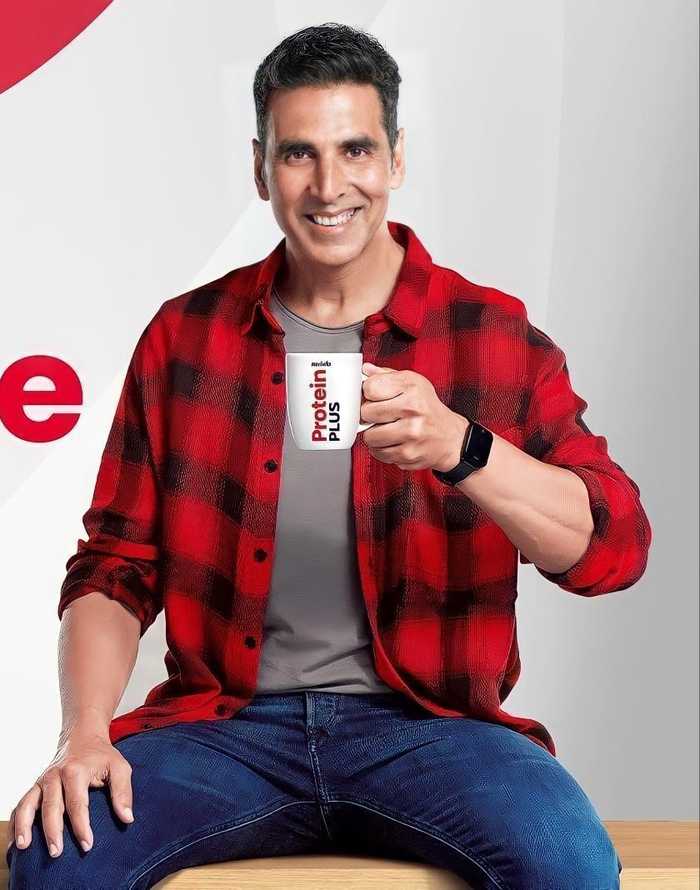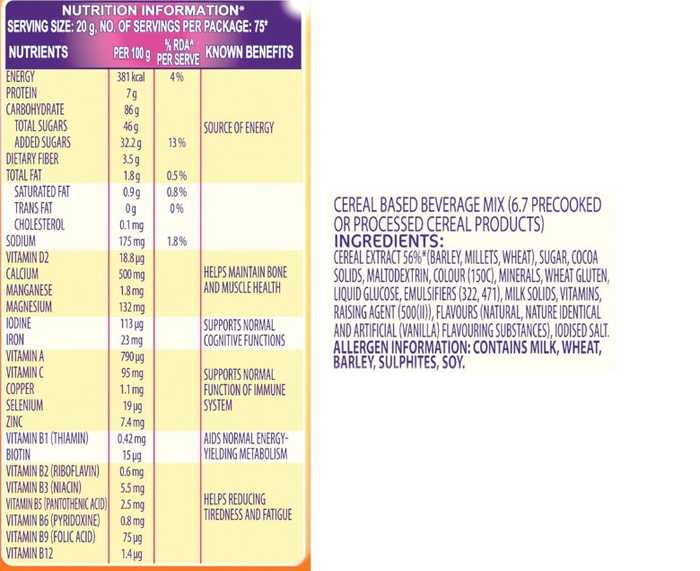Published 13:04 IST, April 26th 2024
How Healthy Are Your Health Drinks? Controversy Around Horlicks, Bournvita, Boost Raises Questions
HUL announces the repositioning of Horlicks from 'Health Food Drinks' category to 'Functional Nutrition Drink'. What led to this decision?
- Health News
- 6 min read
Children have a love-hate relationship with milk. Our childhood was spent getting convinced by parents to drink milk, with many of them resorting to adding “health drinks” like Horlicks, Bournvita, Boost and Milo to the plain milk to make it taste better. We have grown up watching advertisements of these drinks claiming they are healthy, nutritious and delicious. Some drinks claim that they can increase height and build muscles, while others say that they can sharpen the brain.

These claims, backed by celebrities in fancy ads, did not just entice children into believing that adding these powders is the only way to make milk taste good, they also convinced parents that they are feeding their kids something healthy. However, after a directive by the Ministry of Commerce and Industry to e-commerce companies, instructing them to reclassify drinks and beverages from the category of 'health drinks' on their platforms, we are all left questioning the authenticity of those claims.
From Health Drink to Functional Nutrition Drink in a week
HUL, the parent company of brands such as Horlicks and Boost has announced the repositioning of its 'Health Food Drinks' category to 'Functional Nutrition Drinks' (FND). This comes after the recent actions taken by the Ministry of Commerce and Industry, which directs e-commerce platforms to remove beverages from the 'health drinks' category due to undefined regulatory standards.
Ritesh Tiwari, Chief Financial Officer (CFO) of Hindustan Unilever, said, "We have changed the labels of the category to FND, which is a much better way to call it." He stressed on the potential of growth within the FND segment, including advancements within its premium FND range, catering to diabetes management and women's health. Just last week, Mondelez-owned Bournvita also stopped calling itself a health drink, after the new government directive.
According to National Health Service, adults should have no more than 30g of free sugars a day. In children aged 7-10 should, consumption of sugar should not be more than 24 g per day, whereas children aged 4-6 should have no more than 19 grams of sugars per day. Bournvita previously contained 37.4 grams of added sugar per 100 grams of powder. However, the new packaging in December 2023 reveals that it has a reduced sugar content of 32.2 grams per 100 grams.

What does Functional Nutrition Drink mean?
The shift from the health drink category to FND has happened because of the absence of a clear definition of 'health drinks' under the Food Safety and Standards Act 2006. Now, it is important to know what FND means. According to ScienceDirect, “A functional beverage can be defined as “any non-alcoholic drink that provides additional health benefits due to the inclusion of any bioactive component from a plant, animal, marine or microorganism source.” With the addition of Horlicks and Boost in this category, they can create niche products for specific issues.
What are the ingredients in Horlicks and Bournvita?
The ingredients in 500gms of Bournvita are - cereal extract 56%* (barley, wheat), sugar, cocoa solids, colour (150c), minerals, wheat gluten, liquid glucose, maltodextrin, emulsifiers (322, 471), milk solids, vitamins, raising agent (500(11), iodised salt, flavours (natural, nature identical and artificial (vanilla) flavouring substances). Allergen information: contains milk, wheat, barley, sulphites, soy.

Horlicks lists its key ingredients in a 500 gm packet as - Malted Barley (Extracted Solids) 39%, Wheat Flour (27%), Milk Solids (14%), Minerals, Wheat Gluten (2%),Vitamins, Protein Isolate. With HUL rebranding Horlicks as an FND drink a week after the government directive, this can be seen as a well thought-out step to branch out.

How did the issue of misleading claims come to light?
Social media influencer and a certified nutritionist Revant Himatsingka, known as Food Pharmer online, had posted a now deleted reel, where he talked about the misleading packaging and claims of Bournvita. While he was served a legal notice by the parent company Mondelez, it is noteworthy that his reel brought about significant changes.
For example, Bournvita changed its tagline from “tann ki shakti, mann ki shakti” to “tayyari jeet ki” to finally not having a slogan on its packets. In a recent reel, Himatsingka talked about the change in Bournvita’s ingredients. He posted, “1 video resulted in a 15% reduction in sugar. Imagine if all Indians started reading food labels. Companies wouldn’t dare falsely market themselves.”
Questiuons over celebrity-backed ad campaigns
The latest campaign, amid all the controversies surrounding Bournvita, focusses on Vitamin D in the beverage. The packaging claims that it contains 50% of the daily Vitamin D requirement. And as has been the trend with these drinks, rather than Bollywood celebrities, athletes are seen featuring in the campaign.
Star players like sprinter Hima Das, boxer Ashish Kumar and squash player Anahat Singh were a part of the Tayyari Jeet Ki campaign. It instantly drew criticism from the netizens, who called it “Tayyari Diabetes Ki”. Previous brand ambassadors of Bournvita include Ajay Jadeja in the 90s, Saina Nehwal and the skipper of Indian cricket team Rohit Sharma.

Boost has also had the influential athletes endorse the beverage, including the biggest of cricket stars like Mahendra Singh Dhoni and Virat Kohli, along with youngsters like Shreyas Iyer and Rishabh Pant. All of them parrot the “Boost is the secret of my energy” tagline, making thousands of people believe that it in fact, is a healthy drink.
Horlicks, on the other hand, has focussed on roping in celebrities like Akshay Kumar, Tapsee Pannu and Taare Zameen Par star Darsheel Safari back in the late 2000s, at the peak of his popularity. They had also signed Amitabh Bachchan, who decided to not promote the brand last minute because of its high sugar content, which was brought to his notice by fans, concerned citizens and several NGOs.
What are the other products facing the flak for misinformation?
In the meanwhile, Nestlé faces similar allegations of excessive sugar content in Cerelac baby food. The company has found itself embroiled in controversy over allegations of high sugar levels in its Cerelac baby food products sold in India and other developing nations. An investigation conducted by Public Eye and the International Baby Food Action Network (IBFAN) revealed stark disparities in sugar content across different markets.
Revant Himatsingka also called out instant beverage mix Tang, for having more than 93% sugar. He posted on X, saying, “Tang has ~93% sugar! Tang is nothing but flavoured sugar powder. If they limited their marketing to taste, there would be no issue. The problem is they advertise their product as a drink with various vitamins.” It is noteworthy that Tang also contains E171 (Titanium Dioxide), an ingredient banned by the EU and several Middle-Eastern countries.
Updated 14:16 IST, April 30th 2024